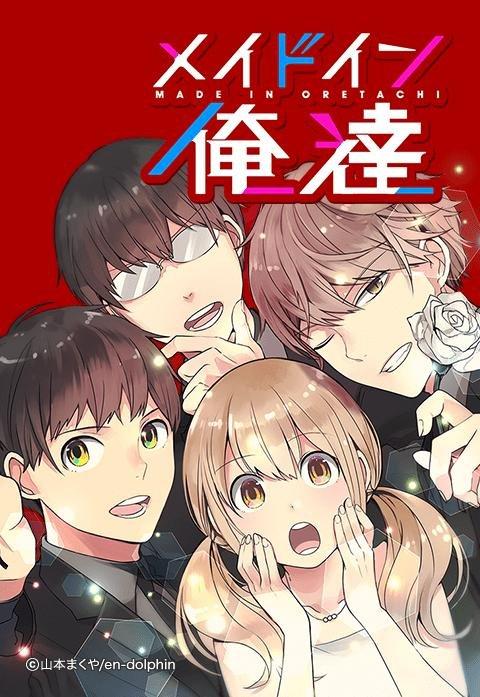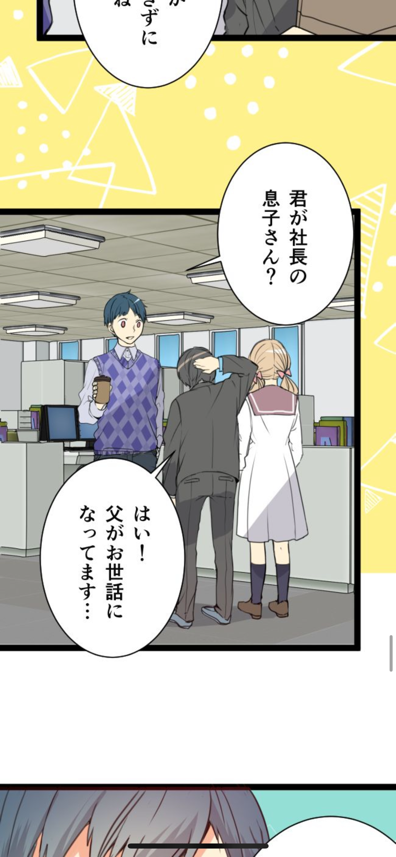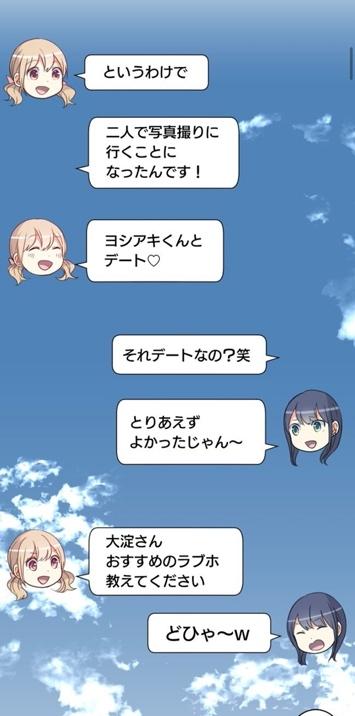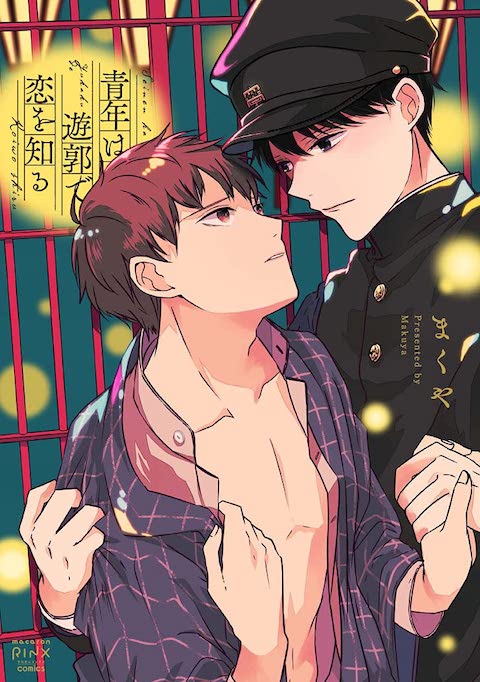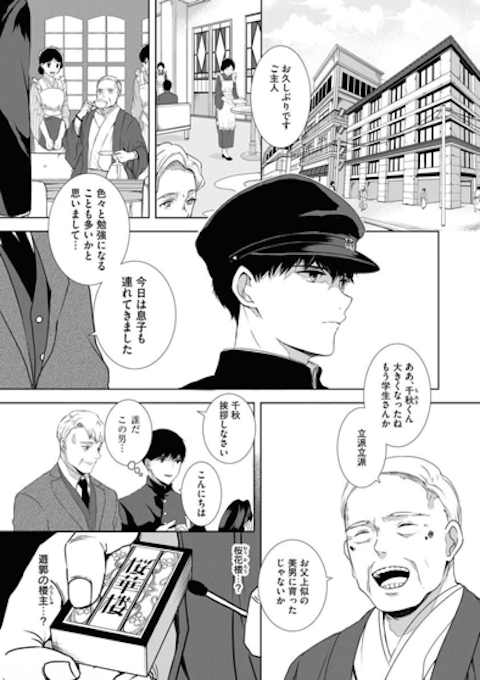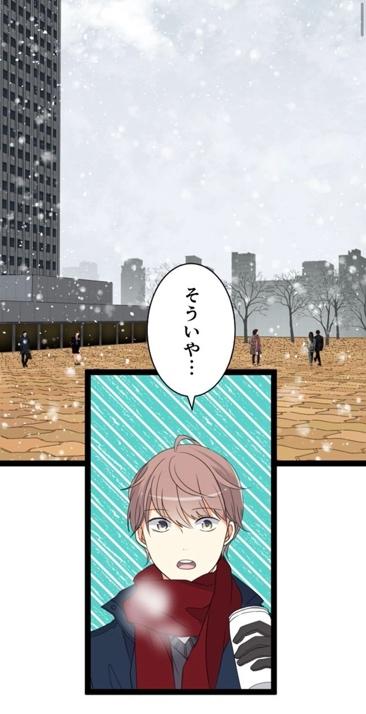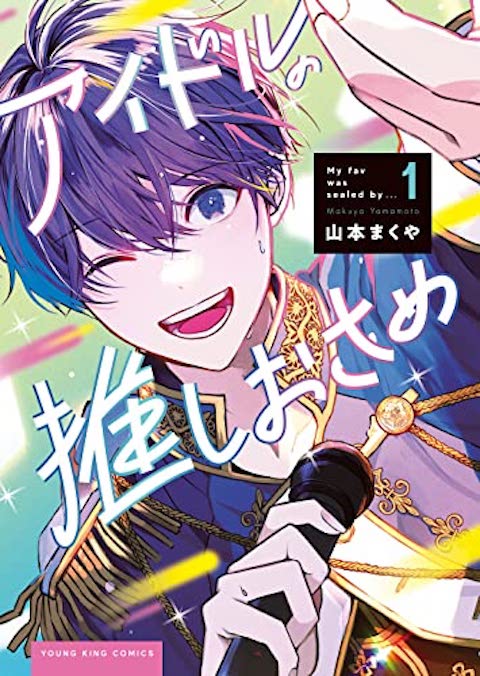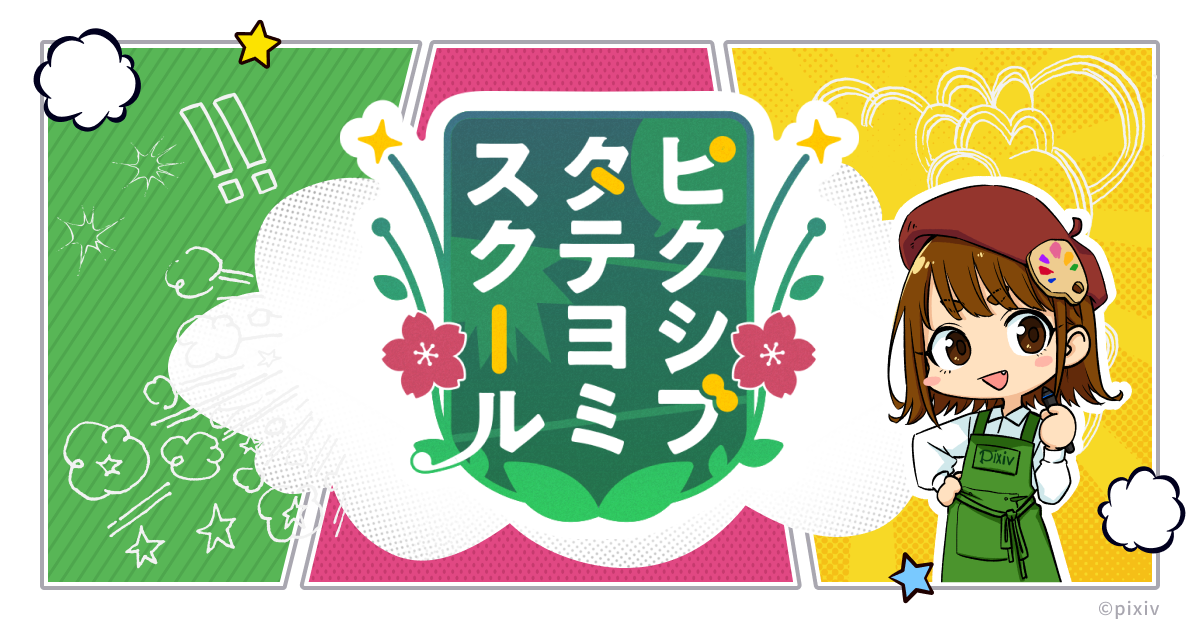描き方じゃない!WEBTOON(タテヨミ)と横読みの違いって? 両方経験した漫画家・山本まくやが語る、創作や報酬の裏側
インタビュー/ちゃんめい
近年、日本のマンガ市場で勢いを増しているタテヨミマンガ(以下、タテヨミ)。WEBTOONとも呼ばれますね。Web上で縦にスクロールして読めるという特性上、スマホとの相性がよく、読者数を順調に増やしています。また、作り手のみなさんからすると、従来の横読みにはない全編フルカラーかつ、より自由度が高いコマ割りができるタテヨミは、“新しいマンガ表現”という観点で気になるジャンルなのではないでしょうか。
そこで今回は、タテヨミ・横読み両方の商業連載経験を持つ山本まくや先生にインタビューを敢行。気になるタテヨミ・横読みの創作体制や報酬の違い、そして両方経験されたからこその強みなどをお伺いしました。
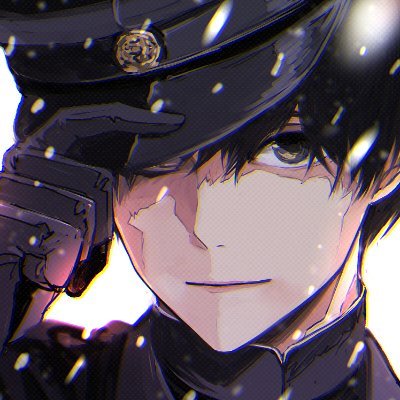
- 山本まくや
-
漫画家。2019年に「LINEマンガ」にてタテヨミ『メイドイン俺達』で連載デビュー。その後、「mystickレーベル」で横読み『青年は遊郭で恋を知る』(1巻完結)、「マンガMee」でタテヨミ『追放ヒロイン』を経て、現在は月刊「ヤングキングアワーズGH」にて『アイドルの推しおさめ』(既刊1巻)を連載中。
マンガ未経験なのにタテヨミで連載デビュー、きっかけはSNS!?
── 漫画家デビューする前は、どんな活動をされていたのでしょうか。
山本:イラストをTwitterやpixivにアップするくらいで、そこまで積極的に創作活動はしていませんでした。マンガも4コマくらいしか描いたことありませんでしたし。でも、当時勤めていた会社が副業OKだったので、ソーシャルゲームのイラストやモーション作成のお仕事は定期的にやっていました。
── そのお仕事はどういった経緯で依頼されることになったのでしょうか。
山本:特に私の方から案件に応募するということはなく、Twitterやpixivにアップした作品がきっかけで、お声がけいただきました。ポートフォリオみたいな感じで見ていただけるので、Twitterはもちろんpixivさんには本当にお世話になっています(笑)。
── そこから初連載『メイドイン俺達』に至るきっかけはなんだったのでしょうか。
山本:まず、Twitterでマンガ制作会社のエンドルフィンさんからメールをいただきました。エンドルフィンさんはタテヨミ専門の会社です。未経験ではありましたが、とても興味があり挑戦してみたかったですし、来た仕事は断らないスタンスなので、そのままお受けしました。
Ⓒ山本まくや/en-dolphin
── マンガ制作の経験がない状態で、新しいジャンルであるタテヨミへの挑戦……。葛藤や迷いはなかったのでしょうか?
山本:描けるかな?という不安はありましたが、タテヨミの存在は元々知っていましたし、読んだこともあったので特に抵抗感みたいなものはなかったですね。エンドルフィンさんも、タテヨミの描き方指導はもちろん、制作体制なども手厚くサポートしてくださったので困ることもなかったです。
── 『メイドイン俺達』はラブコメですが、ジャンルや設定に関しても制作会社からのオーダーだったのでしょうか。
山本:いえ。作品に関しては企画段階から好きにやらせていただいて、とにかく自由に描いていましたね。
── 手厚いサポートとご自身の描きたい作品での漫画家デビュー。とても理想的なスタートに見えますが、初連載で苦労したことはありましたか?
── 当時は会社員をしながらの兼業スタイルでしょうか、それとも専業ですか?
山本:最初は会社員と兼業しながらでしたが、『メイドイン俺達』の連載準備中にマンガ一本で食べていく決意をして会社を辞めました。
── 会社ではどんなお仕事をされていたのでしょうか。会社員時代の経験が活きた瞬間がありましたら教えてください。
山本:金融系の会社でフロントエンドのプログラマーとして働いていました。『メイドイン俺達』はゲーム会社が舞台のお話だったので、ある程度の開発フローとか、職場の雰囲気を掴む上で、会社員の経験はとても役に立ったと思います。
Ⓒ山本まくや/en-dolphin
週刊でのタテヨミ連載、制作の裏側
── ここからは初連載当時のタテヨミ『メイドイン俺達』の制作体制について詳しくお伺いできればと思います。まず、アシスタントは何名いらっしゃったのでしょうか。
山本:タテヨミ作家の中でも珍しいパターンかもしれませんが、アシスタントの方は1名だけで、主に着色の作業をお願いしていました。それ以外の原作・プロット・ネーム・作画は全部自分で担当しています。
── タテヨミといえば、分業制のスタジオ方式で制作されるイメージが強いので驚きです。アシスタントの方はどうやって探されたのでしょうか。
山本:編集の方が探してくれました。連載が始まる前に8〜10話くらいまで描き溜める期間がありまして、そこまでは全部自分でやっていたのですが、やっぱり着色のアシスタントがいた方が良いよねという話になったんです。
── 着色以外の作業は全て山本先生が担当されているとのことでしたが、それぞれ具体的な作業内容を教えてください。
山本:まず、頭の中で物語の全容を考えるのですが、私の場合はコメディシーンから思いつくことが多かったんです。だから、その展開に持っていくためにどういう流れにすれば良いのか……コメディシーンを起点に全体の流れを考えていきました。そこから具体的に文章に落とし込んでプロットを作成していきます。ですが、私はセリフを先に起こしてしまうので、完成イメージとしては台本みたいな感じですね。プロットの形式は、小説っぽく書く方もいますし、作家によって様々だと思います。
── 『メイドイン俺達』は会話劇のテンポの良さが心地良いなと感じたのですが、これはセリフを先に起こすという作業工程が活きているのかなと思いました。
山本:そうですね、セリフは会話のリズム感や空気感を意識して考えていました。特に、キャラクターが生き生きするように、人っぽく喋るように……という点は気をつけていました。
── 実際に制作、連載をしていく上で気づいたタテヨミならではの作法などはありましたか?
山本:8話くらいで、読者を次の話に引っ張るような“ヒキ”がいるんだなと気づきました。やっぱり自分で改めて読み直した時に、何か物足りないなと思ったんですよね。例えば、週刊誌だったらなんとなく毎週購入して読むことが習慣化されている人がいると思うんです。でも、タテヨミはWeb連載なので読者が次も読みたい!って強く意識しないとコインを支払ったり、具体的なアクションを取らないんですよ。だから、そのフックとなる“ヒキ”を各話に作るのはとても重要だなと。
── 『メイドイン俺達』は初連載とは思えないほど、タテヨミならではの表現もたくさん使われていました。こういった表現はどのようにして習得されていったのでしょうか。
Ⓒ山本まくや/en-dolphin
山本:とにかく他のタテヨミを読んで勉強しましたね。背景処理、空白、コマの使い方など、面白いなと思った表現方法はメモをしたり徹底的に研究しました。
横読み、BLへの挑戦『青年は遊郭で恋を知る』
── その後、『青年は遊郭で恋を知る』で初めての横読み、そしてBLへと挑戦されていますが、新しいジャンルに飛び込んだきっかけを教えてください。
山本:Twitterにアップした絵を見た出版社の方からお声がけいただいたんです。当時は、とにかくマンガを描きたい、量をこなしたいと思っていたので、横読みもBLも初めてでしたが迷いなくやります!とお返事しました。
── 作品のジャンルや設定はどのようにして決められたのでしょうか。
©︎山本まくや/少年画報社/発行 大都社
── 『メイドイン俺達』とは何もかも違う作品ですが、不安や抵抗感はなかったのでしょうか?
山本:やっぱり経験を積まないと上手くならないし、そもそもやってみないと課題もわからない……という思いがあったので、やれることは全部やってみよう!の一心でしたね。
── そのチャレンジ精神と言いますか、柔軟な姿勢が山本先生の強みのように感じますが、その考え方は何がきっかけで養われたのでしょうか。
山本:先ほど、会社員時代は金融系のフロントエンドのプログラマーとして働いていたとお話ししましたが、IT業界がまさにこの考え方と近いんですよね。基本的にやらないと上達しないし、最低3年間くらいは頼まれたことはなんでもやる!の精神でいないと何もわからないみたいな……。そういった経験から、漫画家になった今でもやれることは全部やってみようの気持ちでいます。
タテヨミから横読みへ、味わったつまずきと変化とは
── タテヨミから横読みへ、制作過程で一番つまずいたことを教えてください。
山本:『青年は遊郭で恋を知る』では、コマ割りでかなり修正が入りましたね。単調になりがちだからもう少し工夫してくださいと、ネームの段階で数多く指摘されました。あと、物語の舞台が大正時代ということもあり、背景描写に苦労しました。
Ⓒ山本まくや/少年画報社
山本:これは、タテヨミと横読み両方経験したから気づいたことですが、横読みの方が背景の描き込みが多くて大変だなと。タテヨミだとフルカラーなので着色でカバーできるところが、横読みだとモノクロなのでガッツリ描き込みしなければいけない……ごまかしが効かないという点で苦労しましたね。
── 横読みならではの作法みたいなものはいかがでしょうか。
山本:横読みは印刷が前提になります。例えば、セリフは基本的に枠の中に入っていないとダメとか、文字の級数、外枠や断ち切り線の位置など、印刷前提ならではの細かいルールがありましたね。
── タテヨミと横読み、制作工程に変化はありましたか?
山本:基本的にはタテヨミの時と同じです。ですが、ネーム作業のコマ割りに関しては変化というか注意点がありまして……。横読みでネーム作業をする場合、ページをめくって読み続けてもらえるように、見開きの右上にくる最初のコマと左下にくる最後のコマに大事なコマを持ってくるようにするんですが、コマを1つ消したり追加するたびに、その後が全部ずれていくんですよね。タテヨミの場合は原則70コマ以上というルールがあるだけで、逆に80〜90コマになっても問題なかったのですが、横読みだとページ数を増やせないので、かなり調整が必要になってきます。
── コマ数をページ数に換算したとき、タテヨミと横読みでどれくらい差があるのでしょうか。
山本:タテヨミが1話平均70〜90コマくらいで、ページに換算すると16〜18ページくらいになると思うんです。横読みも週刊連載だと大体1話16〜18ページ程度だと思うので、大体同じくらいかなと。ただ、先ほどお話しした通りコマ割りひとつとってもかなり異なるので、比較対象にはならないかもしれません。
タテヨミは伏線が張りづらい?タテと横の得意、不得意
── その後は、タテヨミ『追放ヒロイン』を経て、現在は横読み『アイドルの推しおさめ』を連載されています。タテヨミ、横読みそれぞれで感じた表現方法の得意、不得意について教えてください。
山本:タテヨミはやっぱり色が使えるところが強みですよね。フルカラーだから、キャラクターの洋服の変化はもちろん、キラキラした効果・装飾がより表現できます。あと、スクロールの効果を活かしてコマとコマの間を広くあける……というのもタテヨミならではの表現ですね。あえてモノローグも入れないで沈黙を表現したり、水に沈んでいくさまとか、雪や花びらが舞いおちるところとか、そういった表現は縦に動かすマンガだからできることです。
Ⓒ山本まくや/集英社
── 作品のジャンルに関してはいかがでしょうか。
山本:スポーツやバトル系は、大胆なコマ割りができるという面で横読みの方が向いているのかなと思います。対して、スクロールの空間が有効的に使えるタテヨミは、モノローグや時間差表現に長けているので、雰囲気重視の作品……恋愛やホラー系が向いているのかなと。あとタテヨミに関しては、海外展開を前提に制作されることもあるので、あまり日本独自の文化に寄りすぎないほうが良い場合もあります。例えば、恋愛系だと全世界共通ですが、神社が舞台のファンタジーなどは、海外に展開する場合には工夫がいるかもしれません。
── ちなみに、タテヨミ、横読みへとジャンルを変更した際に、ファンや読者層の変化を感じたことはありましたか?
山本:タテヨミ、横読みというよりも、『青年は遊郭で恋を知る』で初めてBL作品を描いた時にフォロワーが増えましたし、何よりファン層の変化を実感しました。本作は単行本化もしたので、サイン会を開催したのですが、BLの読者さんって本当に熱心な方が多い印象です。タテヨミに関しては、0時に最新話が公開された瞬間にコメントが何件かつくほどリアクションが早いんですよね。読者さんを常に近く感じられるのはタテヨミならではだと思います。
編集者のカラー、報酬形態……気になる違い
── タテヨミ、横読み。作家からすると一緒に作品を作っていく編集者の違いといった面もかなり気になるところだと思います。
山本:編集に関しては、タテヨミ、横読みよりも、IT系か出版社系かで変わると思います。IT系はプラットフォームを持っているLINEマンガさんやそこに掲載している制作会社さんなどで、出版社系は集英社さんのマンガMeeなどですね。といってもそんなに大きな違いはないのですが、強いていえば出版社系は本当に紙の出版と同じで、セリフの一つひとつに細かい校正が入るんです。セリフの言い回しはもちろん、日本語の揺れなど、かなり丁寧なチェックが入りました。
マンガMeeで連載されていた『追放ヒロイン』(Ⓒ山本まくや/集英社)
── これからタテヨミにチャレンジする方に向けて、IT系か出版社系のどちらがおすすめなどありますか?
山本:マンガは描いてみたいけど何を描いたら良いか分からない……という方は、私もお世話になったエンドルフィンさんのような、分業制の制作会社がおすすめです。ネームや作画など自分ができそうなことからチャレンジできます。それに制作会社は売れる作品やトレンド傾向などノウハウをたくさん持っています。反対に、描きたいものが既に決まっている方なら、IT系、出版社系どちらでも、まずは企画持ち込みをしてみたら良いと思います。担当編集さんにもよるので一概には言えませんが、出版社系は作家性を活かした作品を作りやすい印象があります。
── タテヨミと横読み、報酬形態の面でも違いはありますか? 例えば、横読みはベースの原稿料があって、単行本や電書の印税が加算されていく方式ですよね。
山本:タテヨミは基本的に分業制で制作されるので、1話ごとに原作、線画、着色など、どの工程を担当するかによって報酬が変わります。例えば、私のように原作から線画まで全てやる場合は各工程の単価が加算されていきます。コマ数に関しては、1話あたり70コマ以上という規定があるだけなので、80コマ、85コマ……など規定以上のコマを描いても報酬は変わりません。たまに、1コマあたりの単価を設定するコマ換算の報酬形態もありますが、タテヨミは時間経過を表す空白のコマなどがあるので、何をもって1コマと換算するのか。苦労されている編集さんもいらっしゃいましたね。
── 山本先生がタテヨミと横読みの両方をご経験されてきた中で、正直どちらの方が報酬が良いと感じましたか?
「常に刺激がある」「自分の弱みがわかる」両方経験することの強み
── タテヨミと横読みの両方を経てきたからこその強みや、得たものについて教えてください。
山本:単純に仕事の幅が広がるなと実感しています。タテヨミと横読みで関わる人がどんどん増えていくので、常に色々な最新情報が入ってくるところも強みですね。そして何より、創作において常に刺激があるところが良いなと感じています。例えば、タテヨミならではの表現方法を横読みに取り入れたり、逆もまた然り……常に頭をひねりながら創作できるので、慣れてしまったり惰性で描くことがないんです。
── 常に刺激があるのはとても良いことですね。
山本:あと、両方経験することで、自分の弱みがわかるようになってきました。私、モノローグがすごく苦手なんですよ。例えば、主人公の独白を中心に話が展開されるストーリーは、タテヨミ、横読みの両方を経験してみて、まだまだ技術が足りていないんだなと気づきました。
── 本記事を読んでいる人の中には、タテヨミ、あるいは横読みにチャレンジしたいけど、描きあぐねている方もいると思います。そんな方にアドバイスをするとしたら、どんなことを伝えたいですか?
山本:描ける技術はあるのに、一人ではなかなか描き始められない……という精神面であと一歩を踏み出したい方は、もう仕事を取ってきてしまうのが一番かなと思います。仕事となるとやらざるを得なくなるので(笑)。自分もそういうタイプだったので気持ちはわかりますが、ぜひ思い切って飛び込んでほしいです。反対に技術面に自信がない方は、まずは2〜4コマから描き始めてみるのがおすすめです。でも、どちらにせよ一人だとやらない、継続できない方が多いと思うので、絶対にやらなければならない環境を作ってしまうことが一番です。
次は“夢マンガ”に挑戦したい!?タテヨミと横読みを経験した先に
── 山本先生はこれからタテヨミ、横読みそれぞれでどんなことにチャレンジしていきたいですか?
── 最後に今後目指しているクリエイター像を教えてください。
山本:今まではコメディ系の作品を多く描いてきたのですが、これからは読者の実生活とよりリンクして、深く考えたくなるような作品にも挑戦してみたいです。人の人生に少しでも影響を与えられるようなクリエイターになりたいです。
── 山本先生は大人の青春ラブコメ『アイドルの推しおさめ』を「月刊ヤングキングアワーズGH」にて連載中です! 単行本や各種の電子書籍サイトでも読めますので、ぜひチェックしてみてください。
Ⓒ山本まくや/少年画報社

